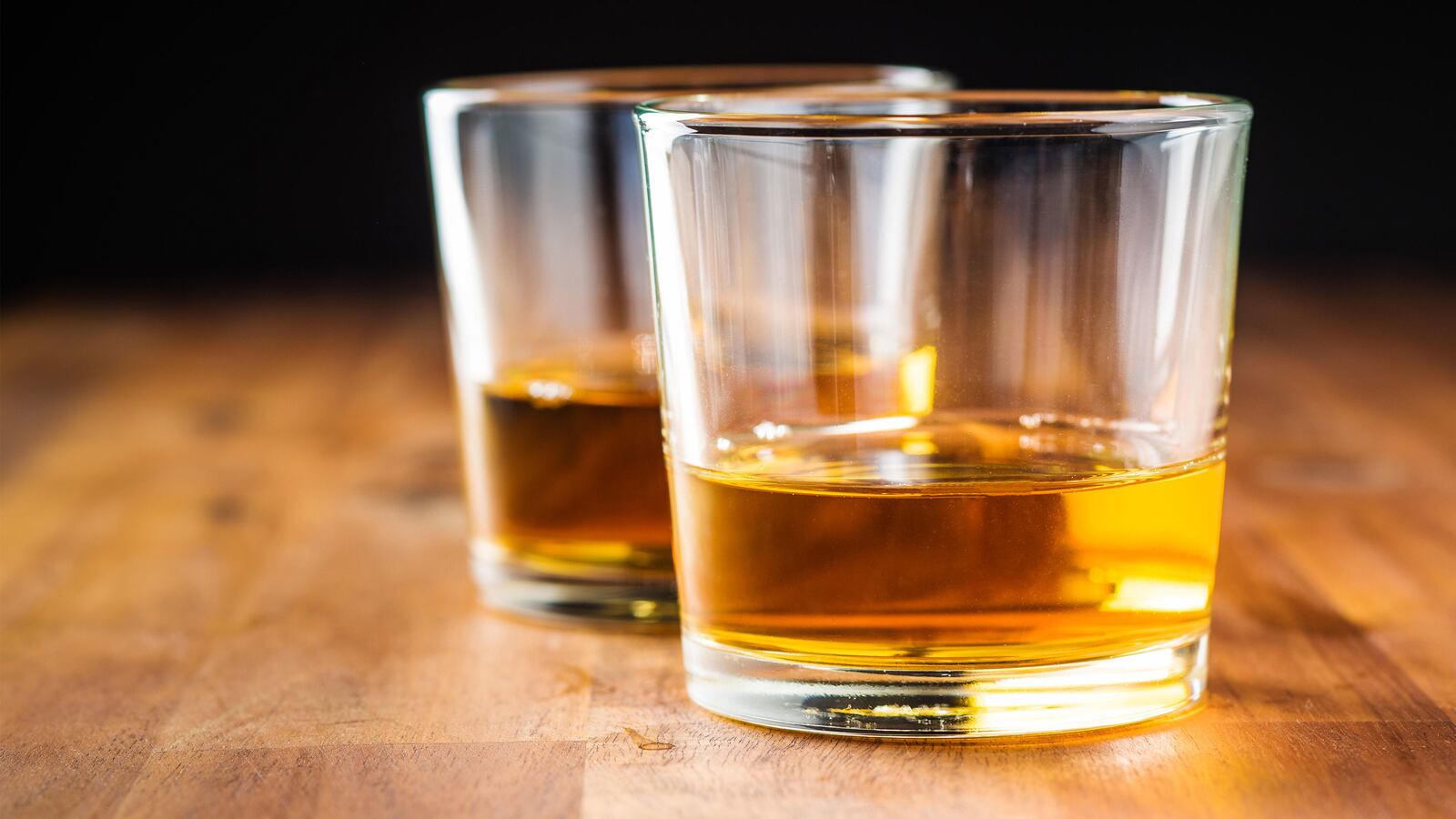What do you taste...what do you smell when you take a sip of whiskey? If it’s Scotch, you may taste tar, or dried fruit, or marmalade. Trying a bourbon? Scents of maple, or blackberry, or coconut come from the glass. Irish? A lush selection of fruit, maybe a grassy freshness. Sipping a Canadian might yield caramel, roasted nuts, and a zippy note of spice. Japanese can offer a bosky note of greenery, perhaps smoky plum notes. Grab a small distillery whiskey, and anything’s on the table: barbecue, hot tires, strawberries, peanuts, or peppermint.
Not one of them is an ingredient in the whiskey. No blackberries, no peanuts, no marmalade, and certainly no tires have been added!
Then where do they come from? The answer to that question is found in the answer to a larger question: what is whiskey, and how is it made? There are flavors and aromas being made (or taken away) at every step, and every step is necessary to the way the whiskey tastes.
It might be the components of water chemistry, or the thermal path of fermentation, or the history and chemistry of sour mash, or the intricacies of Scottish still design. It might be the influence of the design and position of the warehouse, or the size and shape of the barrel, or the climate where the whiskey is aged. Maybe it’s something as simple but easily misunderstood as the concept of “blended whiskey.”
All of those things are important. But none of them are the be-all and end-all of how those whiskies taste. You need to keep your eye on the big picture, the whole process. As renowned Scotch whisky blender Dr. Bill Lumsden says, “If the barrel gives a whisky 50 percent of its flavor...that just means that the other 50 percent doesn’t come from the barrel.” To really understand a whiskey, you have to know where every bit of that 100 percent comes from, and how it’s different from another whiskey.
Here are a few of those differences, and the reasons for them.

Grain.
Rye (Secale cereale) only recently joined barley around the human fireplace. Archeological evidence for rye in active cultivation only goes back about 3,500 years, making it a newcomer, which is probably why Pliny the Elder was so dismissive of it. He complained that this northern grain “is a very poor food and only serves to avert starvation,” that it had a “bitter taste...most unpleasant to the stomach.”
Pliny got the bitterness part right. But that bitterness, what we now think of as spiciness, is part of what makes rye so attractive to whiskey makers, and drinkers. Rye has a full fan of tastes: bitter, mint, grassiness, pepper, and more. It was probably shocking to Pliny’s wheat-accustomed palate, but in a glass, it’s wonderful.
The recipe.
I hear a lot of people saying that so-and-so bourbon from Distillery A is “the same mashbill as this-and-that bourbon, which costs $30 less; it’s the same bourbon, different label.” Sure it is, and this pancake is the same as this waffle, or this funnel cake, or these crepes...except they’re not. They’re all made from flour, sugar, baking powder, eggs, milk, and butter, but they’re prepared differently.
A mashbill isn’t a recipe, it’s just a list of ingredients. Mix and mash them, and it may still be the same. But then you can use different yeasts, different fermentation times; you can use different stills or different still settings, different barrels, different warehouses or floors in the warehouses, and of course, you can leave them in the warehouse for different periods of time. Then the blender gets hold of them, and anything can happen.
Same mashbill, same whiskey? Don’t you believe it.
The water.
There’s also geosmin, a word that sounded so odd when I first heard it that I assumed it was something folksy, made up. But it’s real, an organic compound (C12 H22 O) formed by bacteria that’s found in water and in soil. It is a made-up word, but made up by biologists who identified it in 1965 and named it from the Greek words geo, “earth,” and osme, “odor”: earth-smell.
Geosmin is responsible for the musty, earthy smell of some lake water. It can also most definitely get into whiskey, as people of a certain age can attest. I know I tasted it in my youth, and thought it was part of the flavor of bourbon, which is why I became a Glenlivet drinker in grad school. That mustiness doesn’t happen anymore. Distillers are aware of geosmin now, and filter it out.
Stills.
I was at Midleton, the big Irish Distillers facility where Jameson is made. Dave Quinn, “Head of Whiskey Science” for Irish Distillers, was explaining all the possible paths for the distillate to take among the variety of stills.
It was dizzying. The heads cuts of a pot still run might go into the next run, or they might be split and part of them sent to a column still; the tails cuts might be redistilled immediately with partial cuts from the previous week, the hearts cut on the first spirit run could be split among three different stills for redistillation...I was lost.
“Is there a handout for that,” I asked him, “could you send me one?”
He cocked an eye at me, and said, very seriously, “On paper? No, why do you think I was talking so fast? If I thought you’d actually followed me and got all that down, I’d have to kill you.”
I like Quinn, we’ve always gotten along, but I’m still not sure if he was joking.
Condensers.
There are two types of condensers used in making Scotch whisky. Worm tubs are the old-style coiled copper tubes immersed in cool water, familiar to anyone who’s seen pictures of moonshine stills. The other type, more modern, is called shell-and-tube, where a couple hundred copper tubes turn back and forth inside a copper shell. There is cold water running through the tubes; the shell is filled with the vapor from the stills.
The shell-and-tube condensers expose the vapor to a lot more copper (which pulls sulfur from the whisky), and cool the vapor more quickly and efficiently. The worm tubs work more slowly, and with less copper exposure. As you might expect, the worm tubs make for a heavier spirit. And as you can guess, that’s another case of not being better or worse, but another choice for creating flavor in whisky.
The barrel.
Whenever I think about what goes on in a new, charred oak barrel as new make becomes whiskey, a Winston Churchill quote comes to mind. The politician, author, and adventurer was noted as having said, “I have taken more out of alcohol than alcohol has taken out of me.” Whatever he meant by that, aging in a new barrel is partly a question of absorption running in two ways.
Alcohol and water are both solvents. As they penetrate the char and the red layer, they absorb the color, which becomes the color of the whiskey. They also start pulling out the sugars and vanillin, and other flavors.
On the other side of the absorption balance, the char is at work. Charcoal is one of the most effective filters known, and has a simply amazing internal structure. Consider: a tiny little gram of charcoal has about 200 square meters of effective surface area that can grab and sequester unwanted aromatic compounds. Any sulfur compounds in the corn that got past the copper in the stills will be grabbed by the char.
Proofing.
Adding water changes the alcohol level, which changes the aromas that come forward. More alcohol will carry oak tones; lower the alcohol and the oak backs down, allowing the richer vanilla notes to come out. Distillers will proof whiskies to different levels to find the optimum aroma profile, or to find the level that brings out the particular flavor they’re looking for.
Adding water doesn’t change what flavor components are in a whiskey, nor does it take them away or add them. Adding water changes how whiskey presents itself to your senses, shifts what you sense first or more intensely. It’s like a person changing their wardrobe. The person is the same, but your perception of them is different.
Terroir.
Perhaps, because of that difference between wine and whiskey, there should be a different term for the local effects on flavor in whiskey. Maybe it isn’t so much that there is no terroir, as it is that we don’t discern that effect, because until very recently, most whiskey makers in the modern era were too big to discretely express the kinds of micro-effects that terroir represents.
The late distiller Dave Pickerell was convinced that the rye grown in the fields around Hillrock Estate Distillery, in New York’s Hudson Valley, lent a noticeable difference in flavor to the distillate. He believed that we were only at the beginning of recognizing such micro-differences, thanks to small batch distilling.
I don’t have an answer, nor do I have a suggested term for the combination of local effects on grain, oak, and warehouses that may–or may not–comprise “whiskey terroir.” But it is an intriguing and promising path for craft distillers to investigate.
Get your copy of Lew Bryson’s Whiskey Master Class today!
Reprinted with permission from Whiskey Master Class, by Lew Bryson, copyright © 2020. Cover Illustration: www.shutterstock.com. Published Harvard Common Press.

